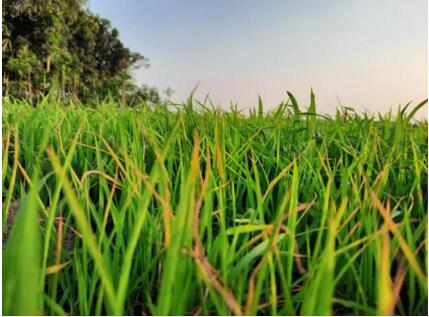Overview
 Distributed under Unsplash License, from Unsplash.
Distributed under Unsplash License, from Unsplash.
Rice (oryza sativa) is a monocotyledonous plant that is usually grown as an annual, although in the tropics it can survive as a perennial and produce a perennial root crop for up to 30 years. Rice can be grown almost anywhere, even on steep hills or mountains, using a water-controlling terrace system. Rice provides food for more than half of the world's population and is a model for studying other monocot species. Creative Biolabs is committed to using intelligent breeding technology and extensive biological data used in rice breeding in recent years to further improve breeding efficiency.
The Novel Breeding of Favorable Genes
Rice is a fibrous root crop, and the seed root develops from the radicle. Regulatory genes for different root traits play different roles in the morphology, structure, and physiological functions of rice roots, and root traits are closely related to the growth and development of the above-ground parts of rice. Advances in modern molecular biology techniques have helped researchers make great achievements in the field of rice molecular breeding. In the future, rice root-related morphology and its regulatory genes can be used to improve rice root traits and speed up rice functions. The following table list the useful genes for future research:
| Modelorg rice gene | |
|---|---|
| Blast resistance | Pi9/Pi2/Pigm/Pizh, Pi36, Pid3, Pi5, Pita, Pia, Pish, pi21, so on |
| Resistance to bacterial blight | Xa7, Xa27, Xa26/Xa3, xa25, Xa23, Xa21, xa13, xa5, Xa1, so on |
| Anti-BPH | Bph26/Bph2, Bph18, Bph32, Bphi008a, Bph3, Bph14, so on |
| Environmentally sensitive male sterility | HMS1, OsGL1-4, OsPTS1, pms3, pms1, tms5, so on |
| Spike type | DEP2, FZP, LP1, SP1, DEP3, EP3, LAX2, DEP1, Gn1a, GNP1, so on |
| Ideal plant type | sd1 (green revolution gene), IPA1, PROG1 |
| Grain Weight | QTL tgw2, GS3, qTGW3, qSW5, GW2, GS5, BG1, GW5, WTG1, qGL3, so on |
| Salt tolerance | OsHAK21, SERF1, RSS3, RSS2, RSS1, OsHAL3, OsHKT4, so on |
| Cold resistance | OsbZIP73, HAN1, OsbZIP71, COLD1, CTB4a, Ctb1, qLTG3-1, so on |
| Drought tolerance | EDT1, OsDRAP1, OsDT11, OsRCI2-5, GUDK, OsSKIPa, so on |
Technical Advantages
- Creative Biolabs has a professional technical team engaged in plant genetic transformation for several years, which can guarantee the success rate of experiments.
- Efficient experimental process.
- The optimized mature embryo transformation system is not limited by the variety, and genetic transformation projects can be carried out at any time;
- The agrobacterium transformation method is fast, efficient, stable, and single-copy insertion is the main method, supporting hygromycin, G418, Basta, glyphosate, manna sugar, and other eukaryotic resistance screening.
- Provide professional technical advice and guidance to optimize projects.
Technical Platform
Traditional genetic breeding has made important contributions to improving rice yield and quality, but due to the lack of Oryza germplasm resources, changes in the ecological environment, and limitations of conventional breeding methods, it has brought certain difficulties to further genetic improvement of rice. With the deepening of molecular biology research, the separation, cloning, and recombination technology of genes and the maturation of transgenic technology, the genetic transformation has become an effective means of genetic improvement of rice. Creative Biolabs provides a one-stop rice technology service platform:
Creative Biolabs offers the modelorg technical platform for different species, including custom service to suit your needs. Please feel free to contact us.

